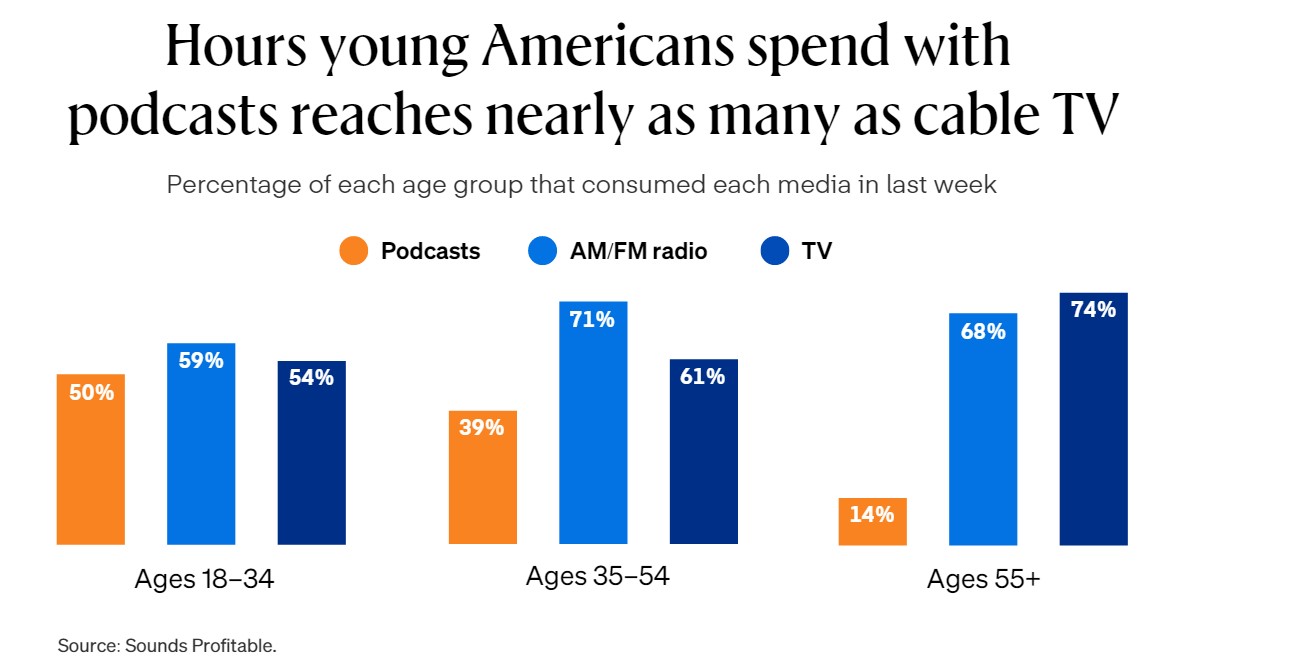Audio advertising – through podcasts, streaming platforms, and various radio formats – is in vogue. It’s essentially the mom jeans of digital media. But this time, it’s less about catchy jingles and more about authentic, engaging content.
Coegi is enthusiastically leaning into this space, adding new programmatic audio capabilities and publisher-direct relationships to our repository of digital solutions., We connected Coegi’s Director of Innovation, Savannah Westbrock, to answer some key questions about the latest trends and technologies within audio advertising.
What are the primary benefits of audio advertising?
The biggest advantage I see with audio advertising is the ability to meaningfully reach engaged audiences anywhere. Consumers spend an astonishing one-third of their media time with audio content. Over 424M individuals tune into podcasts worldwide – that’s over 20% of all internet users! And with 85% of audio listening being done on mobile devices, it’s a great way to reach users on the go and feed into a mobile-first marketing strategy.
Podcast advertising becomes increasingly relevant for brands aiming to reach Gen Z. A 2023 report found that Gen Z listens to podcasts nearly as much as they watch streaming TV. Yet, audio advertising is still a largely untapped white space in the market for many brands.

No matter your industry, marketing goals, or budget, explore how your brand can leverage the influencer status of podcasters to gain brand awareness and build authentic audience connections. Even if you are opting for programmatic audio, aligning your branded content with contextually relevant and interactive audio advertising content will increase authority and brand affinity.
How has the world of audio advertising changed over the last 5 years? Did the pandemic impact audiences’ listening behaviors?
Despite expectations that audio would decline with the rise of hybrid office work and fewer commutes, time spent with audio during the lockdown stage of the pandemic seems to have grown at-home streaming audio listenership to levels not seen previously.
In 2021, at-home audio streaming grew to surpass 90 minutes per day, with expectations to continue rising. Podcasts have been a major factor driving this growth, which could be related to the increase in individuals creating new podcasts from home.
Podcasts are a unique audio advertising opportunity. How can brands do podcast advertising “right?”
This advice is going to be true of all media, but especially with podcasts: know your audience. Heavy podcast listeners usually have tight bonds with their favorites, especially those who subscribe to support their favorite creators. Ensure your audience matches the show, and then ensure the inventory itself is a strong fit for your strategy.
What is the value of doing host-read audio advertising versus dynamic ad insertions (DAI)? Are there noticeable differences in use-case or performance expectations?
Host-read podcast ads have been the mainstay for many years due to historically limited programmatic audio ad formats as well as the benefits of a more organic ad experience. Programmatically inserting audio ads may turn listeners off of your brand if they feel irrelevant and disruptive.
Collaborating with creators may be a better choice if your product or service has a very specific audience. In this case, the process will work much like influencer marketing. (For a full step-by-step process, view our Influencer Marketing Guide.)
However, if your product has broad enough audience appeal that the content of the show itself is less of a strategic concern, dynamic ad insertion remains a doable tactic. With programmatic audio and DAI, you also gain greater flexibility. You can swap out outdated ads with new ones, versus host-read ads which live in the podcast archives forever. Take timeliness into consideration as you weigh the pros and cons of these options.
In what ways are host-read podcast ads similar to or different from influencer marketing?
The relationship between podcast marketing and influencer marketing is quickly becoming a squares-and-rectangles situation. Generally speaking, you can expect a strong recommendation from a podcaster to carry a perception of greater authenticity for your brand.
The core difference is the content itself. With influencers, influencing purchases is the content, whereas podcasts cover every topic under the sun. A relevant recommendation from a trusted host is more akin to a testimonial than an influencer’s #sponsored post.
How do you measure the impact of audio advertising?
Depending on your strategy, measurement will look very different. Programmatically-bought audio spots allow for most standard digital metrics like clicks (via companion banners) and inferred view-through conversions.
But increasingly, strategists are viewing podcasts as a similar opportunity to influencer marketing. With this approach, pairing awareness KPIs, such as reach and lift, with referral codes or unique landing pages can be a stronger play.
For more benefits and tips, check out our 3 Reasons to Use Podcast Advertising blog.
If you’re interested in running audio advertising campaigns with Coegi, contact us for a discovery call.





